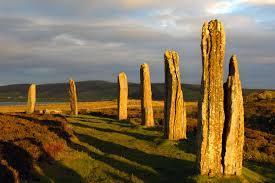Standing Stones and Cathedrals
I often used to wonder why the ancient peoples of Europe chose to leave rough standing stones as monuments, especially when I compared these boulders with the grace of cathedrals that came later. Obviously – the logic went – these ancient and unrefined peoples had no real knowledge of stone and working it, and anyway they had low standards. Question answered.
But what if it wasn’t that, at all? The early inhabitants of Europe could produce large hill forts and even actual hills (think of Silbury Hill in England), so why not something closer to the temples we see elsewhere in the world? So here is a thought to consider: finished temples require a large amount of upkeep. They have to be repaired and looked after, regularly, at vast expense. Just ask anyone who has a church nearby and has seen the appeals for money for repairs.
A large, rough standing stone requires no such upkeep. In fact it seems to mock the prettiness of chiseled stone arches. It seems to say – This is unapologetic Nature, just as God is the force of that Nature. The stone may decay, it may not; it is part of the power of Nature.
And sure enough, several thousand years later many of those stones are unchanged while the forum at Rome is full of ruins.
Those gaunt rocks defy prettiness and our attempts to make the powerful forces of our world seem small, controlled, and man-made. When the Celts worshipped sacred sites, like rivers, they connected to a vast vital sense of the universe. How they must have been disappointed by the small piles of stones and mortar that were the early churches! It must have seemed like the difference between the Alps and a dog kennel.




